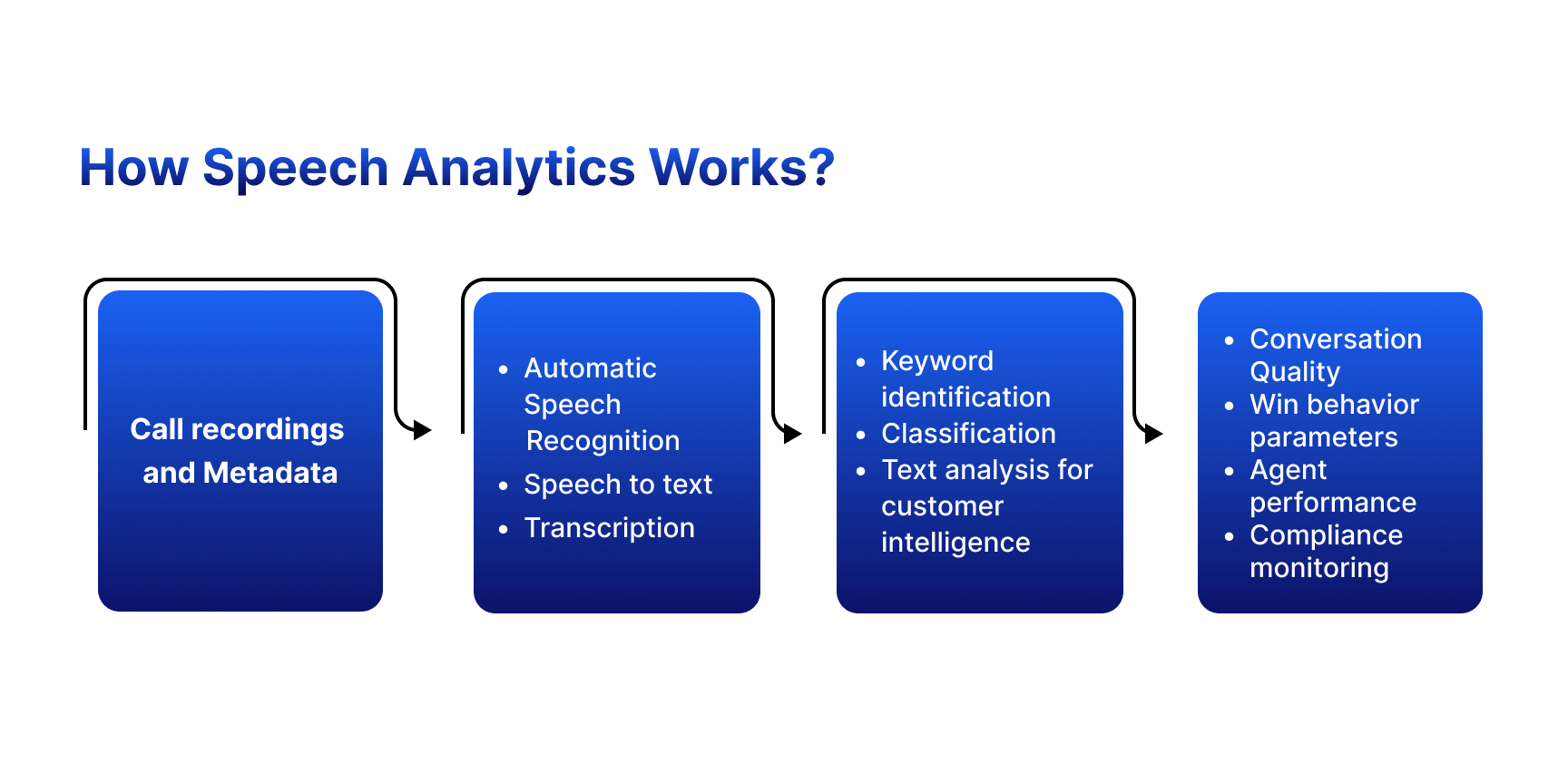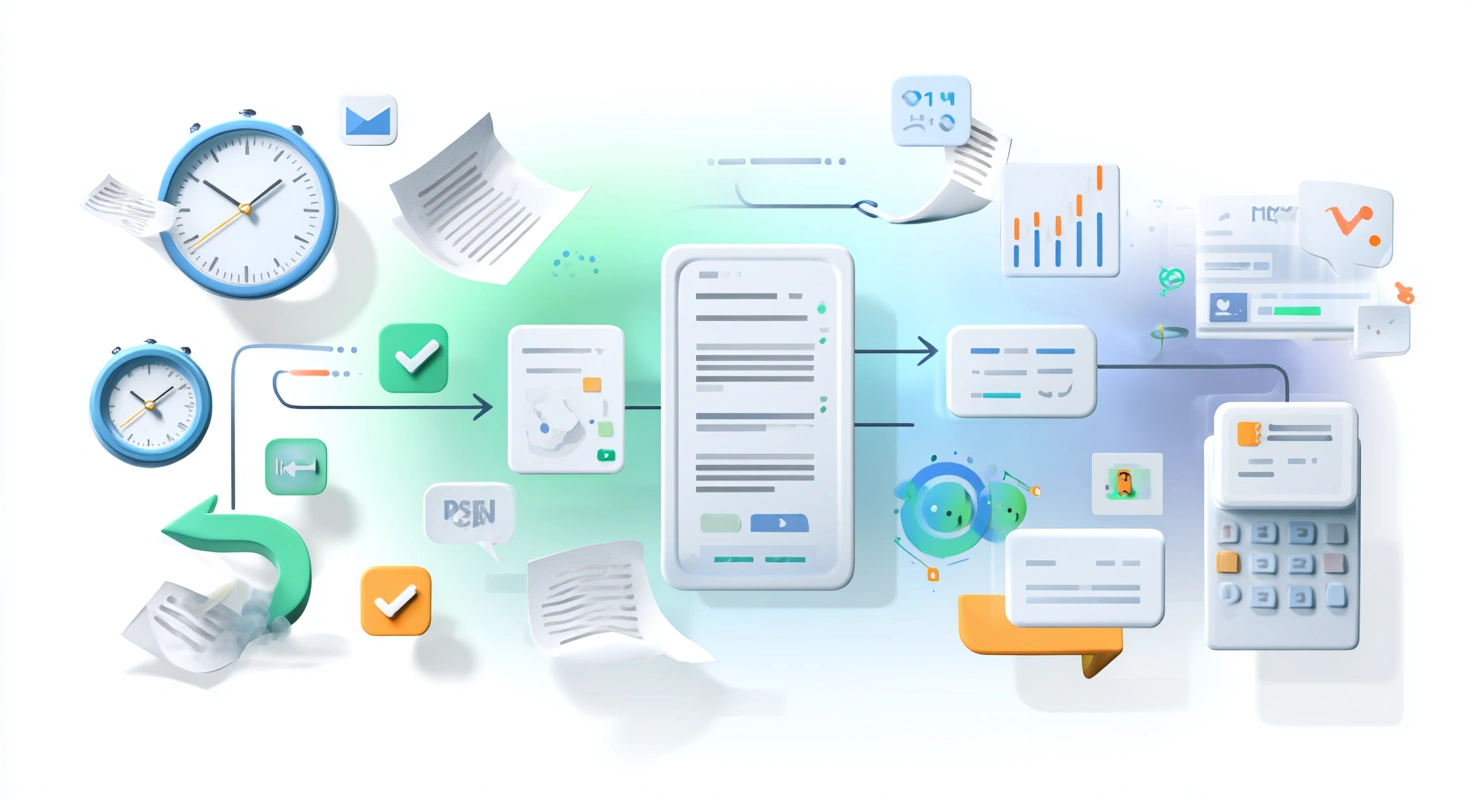Emotion analytics, or affective computing, is studying and interpreting human emotions using advanced technologies. This field leverages data from various sources, such as facial expressions, voice intonations, and physiological responses, to gauge a person's emotional state.
Emotion analytics insights are increasingly used across sectors to enhance customer experience, improve employee engagement, and drive strategic decision-making.
Call centers are crucial in customer service, handling numerous interactions daily. Implementing emotion analytics in call centers can significantly enhance the quality of these interactions.
By analyzing customers' emotions in real-time, agents can adjust their approach to better meet the caller's needs and expectations. This leads to higher customer satisfaction and loyalty.
Boost call center performance with Emotion Analytics today!
The Emotion Analytics Market

Emotion analytics is rapidly transforming various industries, especially within call centers, by leveraging advanced technologies to interpret and respond to human emotions. Several key trends are shaping the emotion analytics market:
- Increased Adoption Across Industries: More brands use emotion analytics in marketing, customer service, and sales to gain deeper insights into customer sentiment and behavior.
- Advancements in AI and Machine Learning: The continuous improvement in AI and machine learning algorithms has significantly enhanced the accuracy and reliability of emotion analytics.
- Omnichannel Integration: Emotion analytics is integrated across multiple customer touchpoints, including phone calls, emails, chats, and social media interactions, providing a holistic view of customer experience.
- Personalized Customer Experience: Companies use emotion analytics to tailor customer interactions, ensuring a more personalized and satisfying customer journey.
Emotion Analytics Market Size and Growth
The emotion analytics market is experiencing substantial growth, driven by the increasing demand for customer insights and the need for improved customer experience.
- Market Size: The global emotion analytics market was valued at approximately USD 1.1 billion in 2023 and is expected to reach around USD 4.6 billion by 2028, growing at a CAGR of 33.9%.
- Drivers of Growth: Key factors contributing to this growth include the rising adoption of emotion analytics software in call centers, advancements in AI and machine learning technologies, and the increasing need for businesses to understand and respond to customer emotions effectively.
- Regional Insights: North America currently dominates the emotion analytics market due to the high adoption rate of advanced technologies and the presence of major market players.
Emotion analytics is not just a trend but a vital tool for businesses aiming to stay competitive and responsive to customer needs.
Benefits of Emotion Analytics for Call Centers
Emotion analytics revolutionizes the call center industry by providing deeper insights into customer emotions and agent performance. Implementing emotion analytics software in call centers has vast benefits, including enhanced customer satisfaction.
1. Enhanced Customer Satisfaction
Emotion analytics plays a pivotal role in elevating customer satisfaction within call centers. Call centers can tailor their responses to better meet customer needs by analyzing customer interactions' emotional tone and sentiment. This leads to:
- Personalized Interactions: Emotion analytics software allows agents to adjust their communication style based on the customer’s emotional state, creating a more personalized and empathetic experience.
- Proactive Problem Solving: Detecting negative emotions early enables agents to address issues before they escalate, improving overall customer satisfaction.
- Building Customer Loyalty: Satisfied customers are more likely to become repeat customers and advocates for the brand, enhancing long-term loyalty.
2. Improved Agent Performance
Integrating emotion analytics into call center operations significantly boosts agent performance. By providing agents with actionable insights into their interactions, emotion analytics helps in:
- Targeted Training and Coaching: Emotion analytics identifies areas where agents can improve, enabling targeted coaching and training programs.
- Enhanced Emotional Intelligence: Agents become more adept at recognizing and responding to customer emotions, leading to more effective and efficient interactions.
- Performance Monitoring: Real-time feedback on emotional cues helps agents adjust their approach during calls, leading to better outcomes and increased confidence.
Key Brands Using Emotion Analytics for Marketing
Emotion analytics is a powerful tool for brands to enhance their marketing strategies.
Leading brands across various industries have successfully implemented emotion analytics to enhance their marketing strategies.
Here are some notable examples:
Coca-Cola: As one of the global leaders in marketing innovation, Coca-Cola uses emotion analytics to understand consumer reactions to its advertisements. By analyzing facial expressions and vocal tones during focus groups and live campaigns, Coca-Cola can gauge the emotional impact of its marketing efforts and make data-driven adjustments to its strategies.
Nike: Nike leverages emotion analytics software to analyze customer feedback and social media interactions. This enables Nike to tailor its marketing campaigns to better resonate with its target audience. For example, by identifying which campaign elements evoke positive emotions, Nike can refine its messaging to foster stronger brand loyalty.
Disney: Disney uses emotion analytics to enhance the guest experience at their theme parks. By analyzing guests' emotions during various attractions and interactions, Disney can identify areas for improvement and ensure a magical experience for visitors. This data-driven approach helps Disney maintain its reputation for exceptional customer service.
Top Emotion Analytics Software for Call Centers
Features to Look for in Emotion Analytics Software
When selecting emotion analytics software for your call center, it's crucial to consider key features that will maximize the benefits of this technology. Here are the essential features to look for:
- Real-Time Emotion Detection: Analyzing emotions in real-time allows agents to adjust their responses during live interactions, improving customer satisfaction and call outcomes.
- Multichannel Integration: Ensure the software can integrate with various communication channels, including phone calls, emails, chats, and social media, to provide a comprehensive view of customer emotions.
- Advanced AI and Machine Learning: Robust AI and machine learning algorithms enhance the accuracy of emotion detection and analysis, providing more reliable insights.
- Customizable Dashboards and Reports: Interfaces displaying relevant metrics and insights help managers and agents quickly access and interpret data.
This blog is just the start.
Unlock the power of Convin’s AI with a live demo.

Comparison of Leading Emotion Analytics Tools
Here’s a comparison of some of the top emotion analytics tools available in the market, focusing on their key features and benefits:
1. Convin
Features: Real-time emotion detection, multichannel integration, customizable dashboards, automated feedback and coaching, high transcription accuracy.
Benefits: Convin's advanced AI and machine learning capabilities provide accurate and actionable insights, improving agent performance and customer satisfaction. Its scalability and integration with existing systems make it a versatile choice for call centers of all sizes.
2. Affectiva
Features: Real-time emotion detection, facial expression analysis, voice analysis, comprehensive API support.
Benefits: Affectiva excels in analyzing facial expressions and vocal tones, offering a detailed understanding of customer emotions. Its robust API support ensures easy integration with various platforms and tools.
3. NICE Nexidia
Features: Speech and text analytics, real-time emotion detection, comprehensive reporting, automated quality management.
Benefits: NICE Nexidia's comprehensive analytics capabilities cover speech and text, providing a holistic view of customer interactions. Its automated quality management features help streamline agent performance monitoring and coaching.
Choosing the right emotion analytics software for your call center can significantly enhance customer satisfaction, agent performance, and overall efficiency.
Contact Center Analytics Use Cases
Contact center analytics, particularly emotion analytics, is applied in various ways to improve customer service and operational efficiency. Here are some common applications and scenarios where emotion analytics proves invaluable:
- Customer Satisfaction Monitoring: Emotion analytics helps track customer emotions during interactions, enabling call centers to measure and enhance customer satisfaction.
- Agent Performance Evaluation: By analyzing emotional cues, contact centers can more accurately assess agent performance and identify areas for improvement.
- Personalized Customer Service: Emotion analytics allows agents to tailor their responses based on the customer's emotional state, providing a more personalized and empathetic service.
- Real-Time Support and Guidance: Real-time emotion detection offers instant feedback to agents, helping them adjust their approach during live calls and improving the chances of a positive outcome.
- Complaint Resolution: Identifying negative emotions early in a call can help agents address complaints more effectively, leading to quicker resolutions and increased customer satisfaction.
Tips for Maximizing the Benefits of Speech Analytics

To get the most out of your speech analytics investment, consider the following tips:
- Use Real-Time Analytics: Implement real-time speech analytics to provide immediate feedback and guidance to agents during live calls. Real-time insights help agents adjust their approach on the spot, improving call outcomes.
- Identify Trends and Patterns: Regularly analyze the data collected to identify trends and patterns in customer interactions. Understanding these trends can help you address common issues, improve processes, and enhance customer satisfaction.
- Automate Quality Management: Use speech analytics to automate the quality management process. Automatically score and evaluate calls based on predefined criteria, allowing managers to focus on coaching and development.
Transform your call center with Enhanced Customer Satisfaction
Examples from Various Industries
The application of speech and emotion analytics spans multiple industries, each leveraging these tools to address specific challenges and opportunities:
- Telecommunications: In the telecom sector, speech and emotion analytics improve customer service by analyzing call center interactions for technical issues and emotional dissatisfaction. For instance, a leading telecom provider reduced churn rates by 20% by addressing customer frustrations identified through combined analytics.
- Financial Services: Banks and financial institutions use speech analytics to monitor compliance and detect fraud, while emotion analytics helps understand customer concerns and improve service quality. A major bank reported a 25% increase in customer retention after implementing these analytics.
- Retail and E-commerce: Retailers use these tools to analyze customer feedback and improve service. Emotion analytics identifies customer sentiment about products, while speech analytics provides context and detailed feedback. These insights improved An e-commerce giant's NPS (Net Promoter Score) by 18%.
Speech and emotion analytics are complementary tools that comprehensively understand customer interactions.
Speech Analytics Use Cases

Speech analytics and emotion analytics are powerful tools that, when combined, provide a comprehensive understanding of customer interactions in call centers. Here's how they complement each other:
- Enhanced Customer Insights: While speech analytics focuses on the content of conversations, emotion analytics delves into the emotional undertones. Together, they offer a holistic view of what is being said and how it is being said, allowing for deeper customer insights.
- Improved Agent Training: Call centers can tailor training programs to address specific weaknesses and strengths by analyzing speech patterns and emotional cues. Agents can be trained in factual accuracy, emotional intelligence, and empathy.
- Real-Time Interventions: Speech analytics provides real-time transcription and analysis of conversations, while emotion analytics detects emotional shifts. They enable immediate interventions to address customer dissatisfaction or escalations, improving real-time support.
Boost Your Call Center with Emotion Analytics
Emotion analytics can significantly enhance your call center business by providing deep insights into customer emotions and sentiments during interactions.

Emotion analytics tools like Convin can analyze vocal tone, speech patterns, and word choice to identify underlying emotions such as frustration, satisfaction, or confusion.
This data allows call center managers to tailor responses, improve agent training, and resolve issues more effectively, leading to higher customer satisfaction and loyalty.
Understanding customer emotions can also help predict churn, enabling proactive measures to retain customers and enhance overall service quality.
Speech and emotion analytics are complementary tools that comprehensively understand customer interactions.
By leveraging these technologies, call centers across various industries can enhance customer satisfaction, improve agent performance, and drive operational efficiency.
As the emotion analytics market grows, integrating these analytics will become essential for maintaining a competitive edge.
See Emotion Analytics in action – Book a demo now!
FAQS
1. What are the benefits of emotion analysis?
Emotion analysis enhances customer satisfaction by providing deeper insights into customer emotions, enabling personalized interactions. It improves agent performance through targeted training and real-time feedback.
2. What is emotional analytics?
Emotional analytics involves using advanced technologies like AI and machine learning to analyze and interpret human emotions from various data sources, such as voice, text, and facial expressions.
3. What is audio sentiment analysis for call centers?
Audio sentiment analysis for call centers uses AI and machine learning to analyze voice recordings, identifying emotional cues like tone, pitch, and stress levels. This real-time analysis helps understand customer sentiments during calls, enabling agents to respond more effectively and empathetically, improving customer satisfaction and call outcomes.
4. How do we analyze emotions?
Emotions are analyzed using natural language processing (NLP) technologies and machine learning algorithms that process data from voice recordings, text, and facial expressions. These tools detect and interpret emotional signals, providing insights into sentiments and behavioral patterns.








.avif)